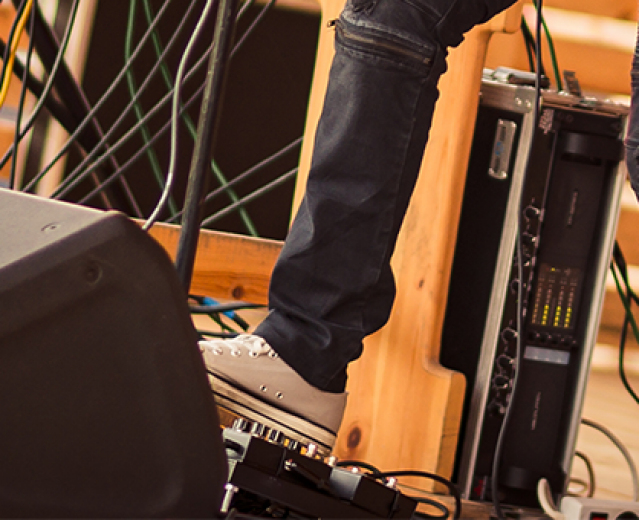The same guitar and the same
pedal sound in a different way depending on the amplifier they are plugged in!
That statement can seem obvious,
but our sound expectations can actually be disappointed or satisfied based on how
we amplify our instrument and effects. In this article we are focusing
on the relation between amplifiers and pedals for electric guitar,
assuming the reader knows the topics covered in other articles of
the Soundsation blog about: effect chain organization, involved electric quantities, kinds of buffer e bypass.
We are going to deal with the matching of pedal effects (also called stompboxes) and guitar amplifiers in a succinct and comprehensible manner, assuming
the reader already knows the differences among the several pedal effects for guitar and bass players.
In this article we are going to focus on dynamic effects such as
compressors, boosters, equalizers, overdrive and distortion boxes.
Big families of
amplifiers
With regard to effect matching we can subdivide amplifiers in four big families:
- Tube amps
1: Fender Tweeds (Bassman) and early Marshalls (JTM, JMP)
- Tube amps
2: Fender Blackfaces, Mesa/Boogie Mark series
- Multi-channel amplifiers
- Solid-state
and digital amplifiers
Premise
Before we go on, there are a clarification and a recommendation
to be done: a lot of guitar players, especially hobbyists and collectors, tend to
spend much more money in guitars than in amplifiers. Well, in my opinion it would be
worth adapting in our field an old good
HiFi rule: the budget should be approximately divided fifty-fifty between the
player + amplifier pair and the speakers pair (or monitors or playback, if you prefer). Carrying the concept to the electric guitar, let’s spend
on our amplifier (or head and cabinet) a sum that is comparable to the one we
have spent for the guitar! Always remember that a great amplifier makes a poor guitar sound good, whereas a great guitar does not make a poor amplifier
sound good. Not only: the electronic part of the amplifier should be proportionate
to the speaker (or cabinet), because it affects about 50% of
the total amp sonic outcome. Also, a
poor amplifier takes advantage of an excellent speaker, and an excellent
amplifier is penalized by a poor speaker or one that is unsuitable for our
sound purpose. Extending the expressed concepts, using a pedalboard that is far more valuable than our amp is crazy: balance is the key to a quality sound, unless you are a creative
musician out of every rule and context! Therefore, in this article I shall
assume that your amplifier has an adequate quality to the guitar and effects
that are connected to it.
Tube amplifiers - 1
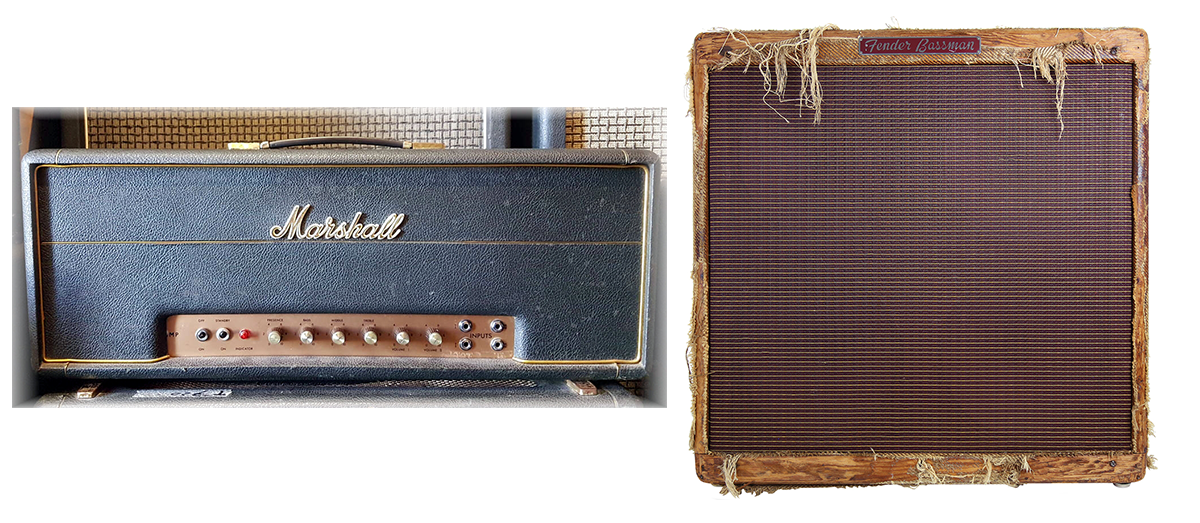
The fundamental concept to keep in mind from now on is
that some amplifier circuits have the equalisation
section downstream from distortion, such as the ones I shall describe in
this paragraph; other amps have the equalisation
section upstream from distortion, such as the ones in the next paragraph. This
implies a substantial difference in sound behaviour and in the relation with
effect pedals.
Fender Tweed Bassmans and early Marshalls broadly share the same circuit design, with tone controls
after the gain stage.’60s and ’70s Marshall amps are set apart for choices of closed cabinets with 12”
speakers and EL34 power valves, that
defined the British sound.
These amplifiers, their likes and derivates are great in digesting effect pedals! Actually, we can say that pedals were born and
developed with them in mind. If we connect a good booster, an overdrive, an analogue modulation effect we will get a fat, warm, pervasive sound.
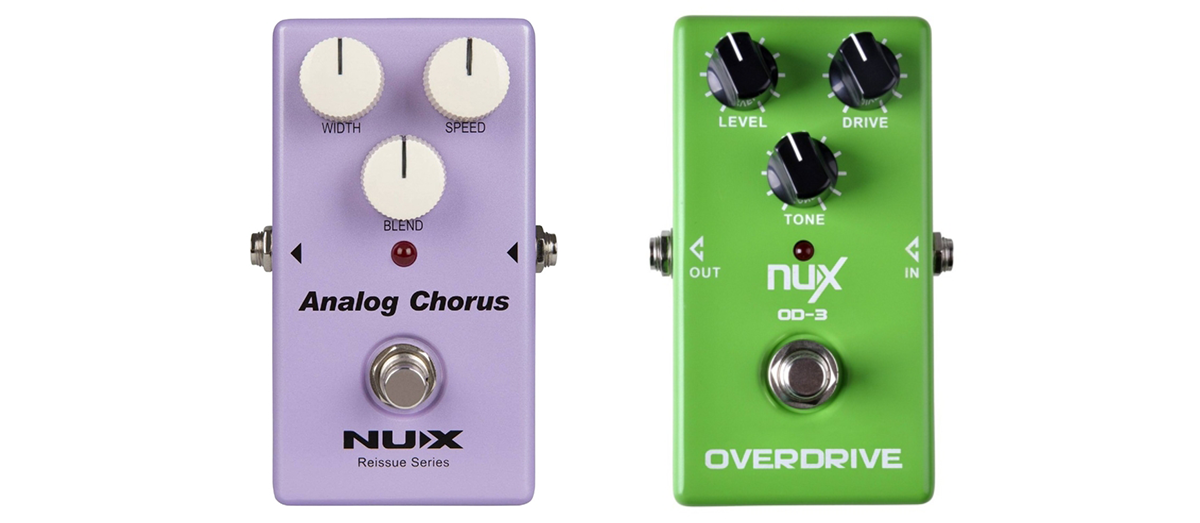
Managing delay and reverb effects can more troublesome. After all this
was not planned by the time these amplifiers were born, when delays came from tapes and reverbs from springs and plates. Let’s
add to the brief list the British very
clean Hiwatts and warm Voxes.
Tube amplifiers – 2
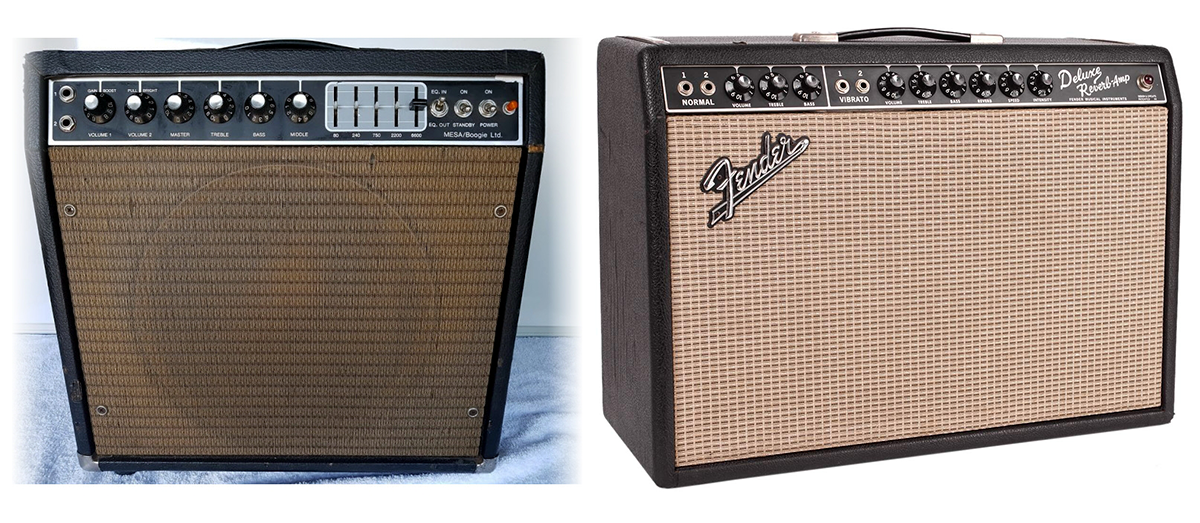
Arriving to Fender
Blackface amps (Twin, Deluxe, Princeton, etc.), the selection of dynamic
effects becomes a little more delicate. Ear wise these amps are defined by a cool
content of bass and high frequencies, while mids are a little cut; their appreciated
tone clarity is mostly due to this design. Their natural distortion thus tends to
enhance bass and high bands, with
the risk of loss of definition in the first range and harshness in the latter. A
boost pedal will stress this basic features. Connected overdrive and distortion
effects must have a warm and easily
adjustable basic tone of own. Remember
it is always possible or advisable to add the underrated EQ and compression pedals to the effect chain.
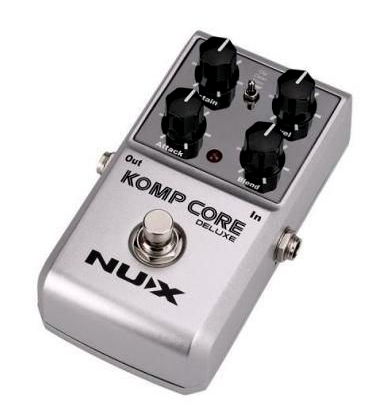
The Mesa/Boogie
Mark 1 was derived from the Blackface design (originally, a Princeton) with
an adjustable gain circuit added, so
the considerations I did can be applied to the Mark Series and to similar two
channel amplifiers (clean + cascade gain
stages). Keep in mind that we have to dose the effects depending on the
used channel: overdrive and modulations are good on the clean channel, and dynamic
effects are generally fine if used on both channels, but always remember there
is a difference. No wonder brand founder Randall Smith equipped some Mark
models with a post-gain solid state
graphic EQ; even if it works before the gain stages of the amp, a good
equalization pedal is useful in defining a distorted bass range that tends to slump
and a middle range that tends to flood.
Multi-channel amps
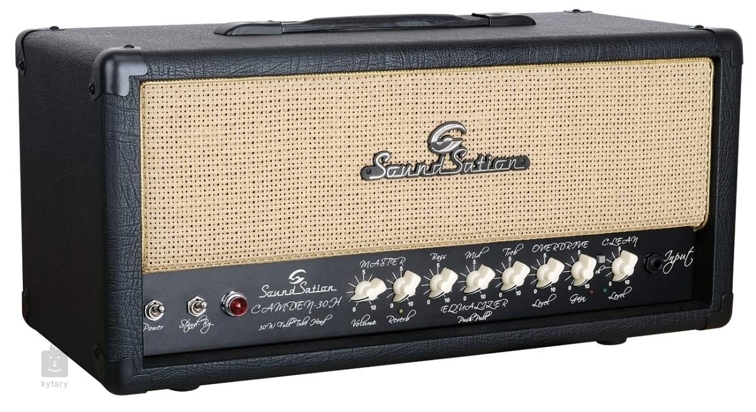
Modern multi-channel tube amplifiers usually
offer a good all season compromise. The ideal thing could be a Blackface style
clean channel, a Tweed/Marshall crunch and a Mesa (modded Blackface) or Soldano (modded
JCM800) style lead channel; or even far beyond according to personal taste, up
to extreme metal. Given the above, it is easy
to understand there is no single or easy solution.
Besides, you have to consider that preamp channels are
not the only things that define the overall sound of our rig. It will change
according to the kind of power amp (class, tubes, rectification) and speaker!
Let’s keep in mind that we should have the possibility
of checking guitar, amp and effects all together before making a choice. This
is not easy in the days of online orders, but do not act in blind; instead
acquire information from professionals, websites,
blogs, videos (use good monitors) and online magazines.
Solid state and
digital amps
From a low budget point of view, a good solid state
amplifier can be the only choice. Some of them are good indeed, but their clean
channel sound does not soften under overdrive and booster push as tube amps do;
so analog pedals providing a warm distortion and a soft attack are preferable.
This also applies to good part of digital amplifiers, especially
cheap ones. In fact, a well done digital amp model should respond to pedals as its
analogue reference, but there remains the problem of the power amp and the speaker,
often a wide band one to favour versatility. Though with certain exceptions, it
is better then to use the onboard digital
effects, that are conceived for that specific purpose.
Something about
speakers
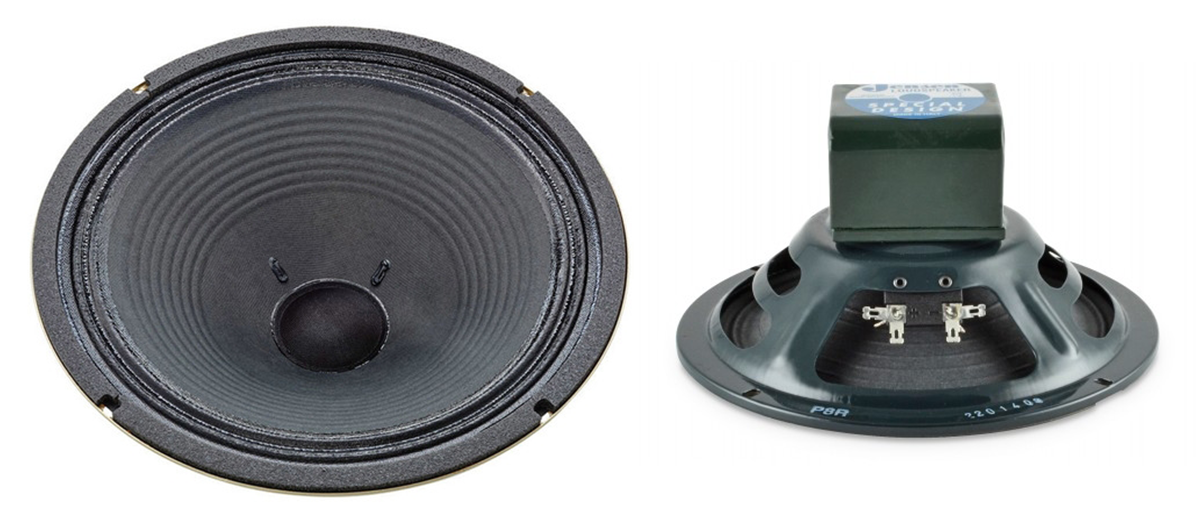
In order to get a good compromise, speaker choice is fundamental
for interfacing effects, especially distortion ones. Exemplifying, a classic
modification in Fender amps is the replacement
of Jensen or Eminence speakers with Celestions, thus getting an easier and more pleasing distortion.
Actually, nowadays most of the builders provide solutions for all tastes. By example, in the years Mesa/Boogie has been offering its amps with
different speakers: Electro-Voice (extremely
clean and sturdy), Eminence (suitable
for many genres), Celestion (rock
oriented). They are all named Black Shadows, but they are tonally different, in
order to meet tastes and trends in music styles of the times.
A few rules
If you are looking for a good, balanced and versatile distortion,
keep in mind that:
- simple
amplifiers are preferable, if possible
a good single or dual channel at the most
- the more the amplifier is complex and full of settings
and utilities, the harder is to fit it with pedals, because the summing of circuits leads to a
loss of dynamics, the famed kick
- very clean and defined channels tend to be very
bright too; using the wrong overdrive could result in a harsh and mid-scooped distortion, that by way can be useful for
metal. By example, two apparently similar effects such as a Tube Screamer inspired overdrive and a British style one give appreciably different results:
fatter the first, thinner the second: which one are we going to use with a Les Paul style guitar and… What amp?
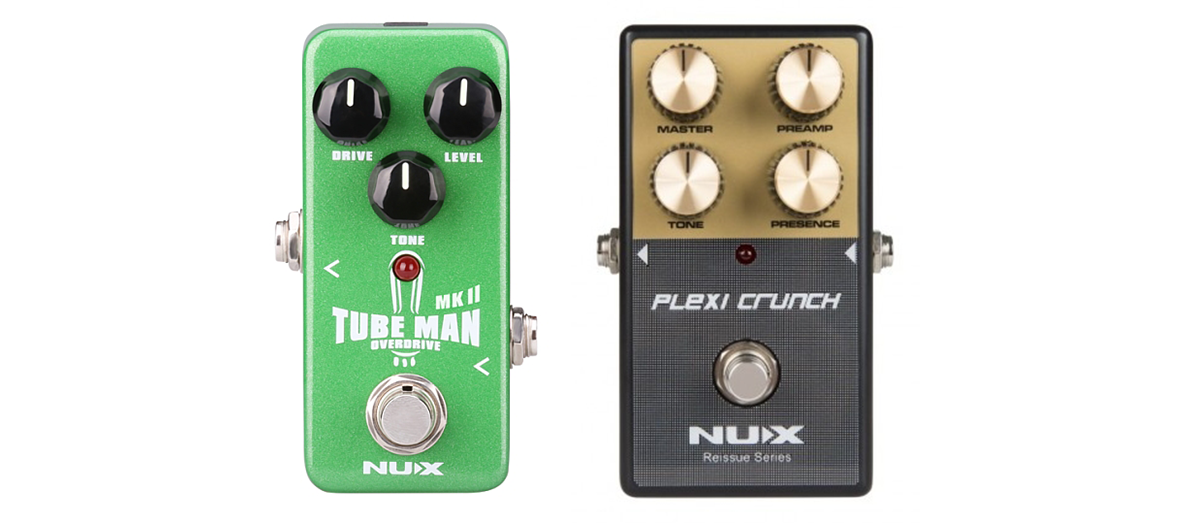
- To vary the menu of combinations from our pedals and
guitar, please consider the possibility of having more than one good amplifier and benefit from different
sounds from different circuitries and speakers.
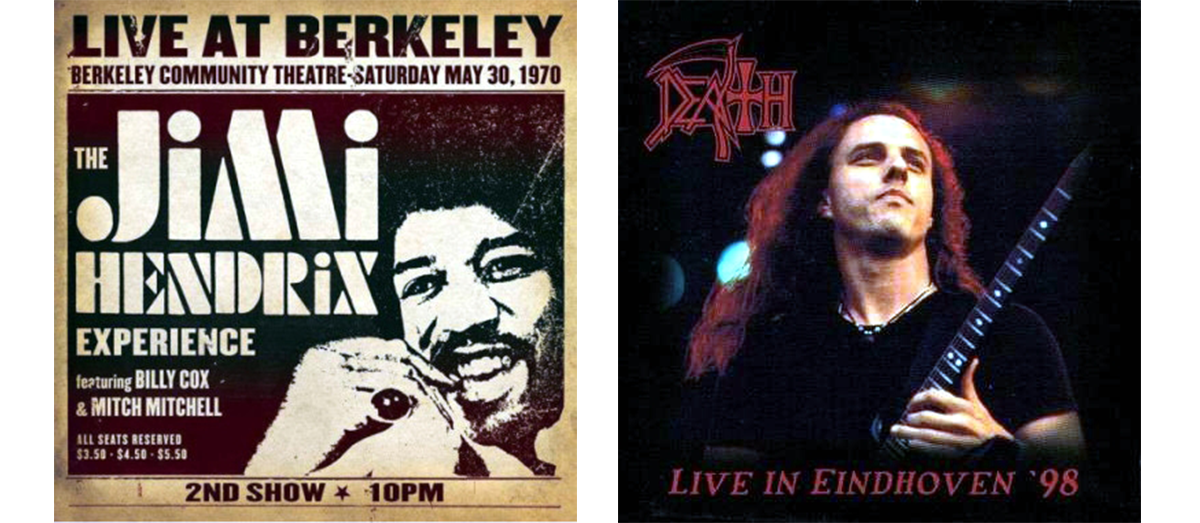
Well, the last advice: listen to historic records and videos, especially live ones, and look for reports about
used equipment if they arouse your interest. However never forget about the all-purpose technological concentrate on your desk: it took decades of right and wrong amp/effect matching to
put it at our disposal!
Fabrizio Dadò
